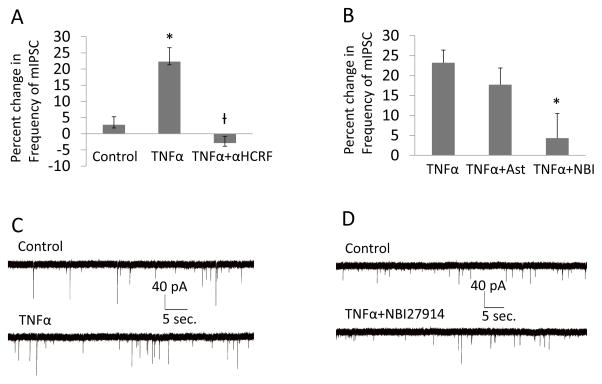Figure 5. CRF Receptor (CRFR) Antagonists prevented the TNFα-induced increase in frequency of mIPSCs.
(A) Histograms depicting the percent changes in mIPSCs during applications of 0 (control), 60-ng/ml TNFα and TNFα (60-ng/ml) with the non- specific CRF receptor blocker, α-helical CRF 9–41 (αHCRF, 1 μM). Over all the percent changes by the three treatments are significantly different [n=6–8 for individual treatments; F (2, 20)=9.89, p<0.01]. Compared with control, TNFα increased the frequency of mIPSCs (post hoc, LSD test, p < 0.01) while α-helical CRF blocked the effects of TNFα (post hoc, LSD test, p<0.001). (B) Shown are Histograms depicting the TNFα (60 ng/ml) induced increase in frequency of mIPSCs and either a CRF-2- receptor- (TNFα+Ast) or a CRF-1-receptor- (TNFα+NBI) antagonist on this TNFα (60-ng/mL)-induced increase in frequency of mIPSCs. Treatments altered modulation of mIPSCs [n = 6–7 for individual treatments; F (2,17)=5.85, p < 0.05]. While astressin 2B (100 nM) did not have effects on the function of TNFα (post hoc, LSD test no difference between TNFα and TNFα with astressin 2B, p>0.05), NBI 27914 (500 nM) blocked the effects of TNFα (post hoc, TNFα with NBI 27914 significantly less than either TNFα or TNFα with astressin 2B, p<0.01 and p<0.05, respectively). (C) Miniature IPSCs recording before (control) and during application of TNFα (60-ng/ml). Note increase in mIPSC frequency by TNFα. (D) Miniature IPSCs recording before (control) and during application of 60-ng/ml TNFα with 500 nM NBI 27914. In the presence of the CRF1RA, TNFα did not increase frequency of mIPSCs.

